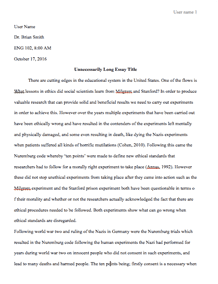

Medical administrative assistants otherwise known as medical secretaries perform their roles through their vast knowledge of applications, medical terminology and general administrative support. They can have many roles and job titles ranging from the patient coordinator, unit secretary to medical office specialist. Skills in data entry, billing and coding, scheduling appointments, preparing the electronic health records, working with insurance companies, as well as attending to the front desk of a medical facility are essential in this field ("What Does a Medical Administrative Assistant Do?" n.d.). Medical secretaries may also divert from office work and attend to basic patient care operations.
Violeta hospital in Toronto, for instance, is a hospital that utilizes emergency color codes. The list of colors and their representation is as follows; code yellow represents missing person, code orange is for disaster and radiation, code red means that there is a fire, white is for violence, blue and pink represent cardiac arrest, brown for hazardous spill, purple signals a hostage takeover, black for bomb threats, and grey for infrastructure loss (Cadogan, Brown, & Celenza, 2011, p. 85). For example, code orange calls for a rapid response from the radiological team who quickly set up a decontamination area for incoming patients.
Interactions between medical assistants and staff from other departments are bound to happen. Having a variety of roles and responsibilities, medical administrative assistants intermingle with patients, physicians, and other healthcare givers. It is essential that the medical personnel at the front desk operates in calming fashion especially during emergencies ("What Does a Medical Administrative Assistant Do?" n.d.). Patients that walk through the hospital are very different, for instance, expectant mothers and people with serious injuries. It is the medical assistant's job to maintain the situation by keeping the patients as calm as possible and also giving updates on when they will see the doctor. The medical assistants similarly maintain confidentiality by upholding a patients privacy. The need to step out of the office usually arises when they are summoned to assist the physicians. When this happens, administrative medical assistants indulge in basic duties such as drawing blood, taking vital signs, and sterilizing medical apparatus.
Coming across new job openings is a norm in the hospital setting. The need to work as a superior medical practitioner is always there but for now, all am doing is sharpening my skills and broadening my knowledge. Working as an assistant for four months now is an eye opening experience, but I feel that my professional experience needs some time to polish and perfect. Therefore I would prefer to wait for appropriate positions in the future.
I would recommend that anyone who is willing to advance their careers and employment possibilities should consider their overall training, career path, goals, as well as career development. The hospital setting provides different options that further solidify skills acquired in the medical profession ("Medical Assistant Career Development Options," n.d.). These may include venturing into various medical fields such as gynecology, dentistry, surgery, or pediatric practice.
References
Cadogan, M. D., Brown, A. F., & Celenza, T. (2011). Hospital-based emergency response codes. Marshall & Ruedy's On Call: Principles & Protocols, 84-86.
Medical Assistant Career Development Options. (n.d.). Retrieved from http://www.medical-assistant-career.com/career/career_development.php
What Does a Medical Administrative Assistant Do? (n.d.). Retrieved from http://www.rasmussen.edu/degrees/health-sciences/blog/what-does-a-medical-administrative-assistant-do
Request Removal
If you are the original author of this essay and no longer wish to have it published on the customtermpaperwriting.org website, please click below to request its removal:


